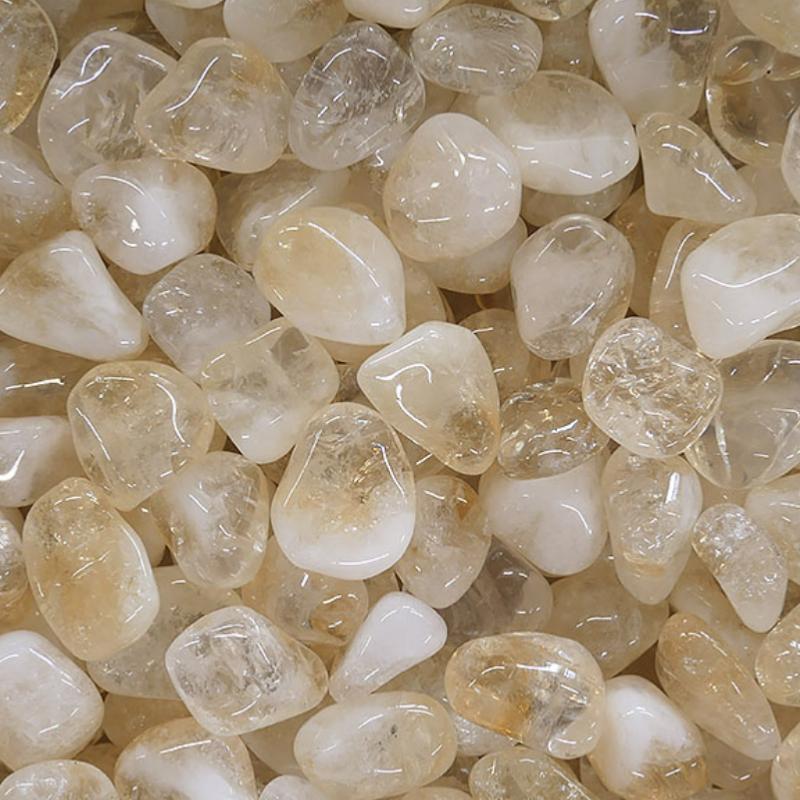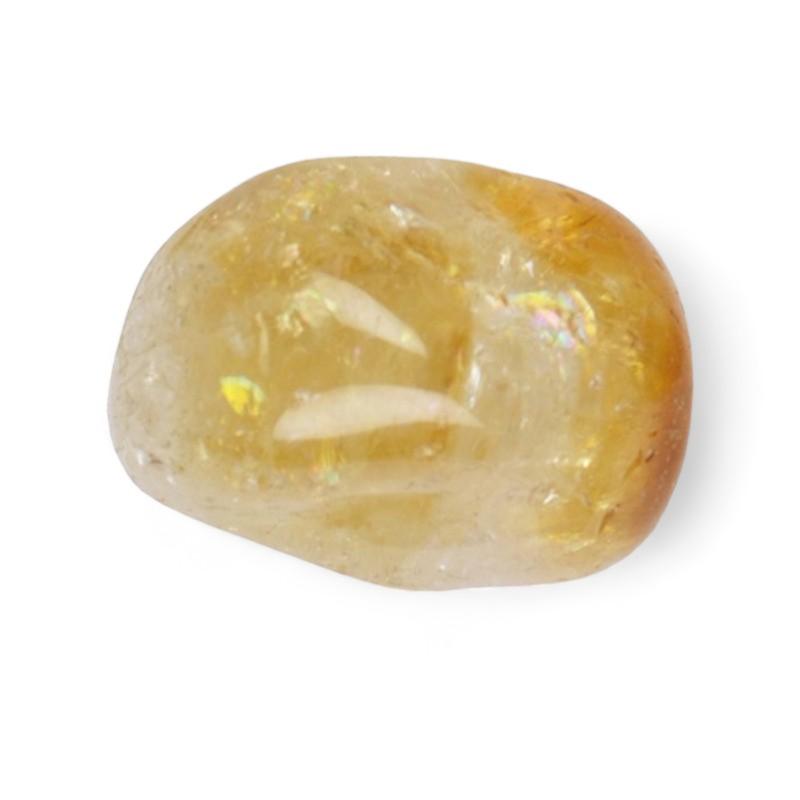1
/
of
2
Heated Citrine (Heated Amethyst) Brazil A (Tumbled Stone)
CIT-R-0205-10
8c984efa-30a8-5524-41cc-ae7b332135e6
028d80eb-2b30-41d4-b221-bda49eca04cf
- Regular price
-
2,90 € - Regular price
-
2,90 € - Sale price
-
2,90 €
Tax included.
Shipping calculated at checkout.
Couldn't load pickup availability
Learn more
CIT-R-02
Origin: Brazil
Grade: A
Dimensions:
05-10g - About 15-25mm
10-20g - About 25-35mm
20-30g - About 35-45mm
Origin:
Brazil
Grade:
A = good
Heated Citrine Tumbled Stone (Heated Amethyst) from Brazil
Sold individually.
Weight to choose from 05-10g to 20-30g
Shapes and colors vary from one stone to another
Contrary to popular belief, the name citrine comes from the Latin “citrus”, which does not designate “lemon” but the yellow citrus fruits of the citron tree. Moreover, citron comes from the Greek word “kedros” translating as cedar.
This Latin root is found in the names lemon, lemon tree or lemongrass, but also in pumpkin or citrare (old name for lemon balm producing a yellow-colored infusion).
Long before being attributed to the citrine stone, the terms citrine and citrine qualify adjectives of color. In very old works of medicine, writings mention “citrine” ointments or “citrine” balms.
Nowadays, there are two types of citrines available commercially, either natural citrine or heated citrine .
Citrine is a quartz and belongs to the group of silicates, more precisely tectosilicates with a hexagonal crystal system. It has a hardness of 7/10 on the Mohs scale, indicating that it has good chemical and mechanical resistance.
In summary, citrine is a stone from the same family as rock crystal and amethyst. The only difference is in their respective color. It should be noted that rock crystal is pure silicon dioxide, while citrine contains iron inclusions, giving it its yellow color when it has been naturally heated by magma.
So, to obtain heated citrine, you need to quickly heat the amethyst between 500 and 600°C.
Its color under the effect of heat will vary from purple to yellow. The iron and aluminum atoms change to give a bright yellow color.
This is exactly the same process for natural citrine, except that the heating process caused by the magma extends over decades. It is obvious that natural citrine has a much higher cost than industrially heated citrine.
Heated citrine has a very yellow color, darker, less translucent, even opaque compared to natural citrine. The majority of commercial citrines are in fact heated citrines. They have inclusions, pockets of water containing minerals retained in the stone and which grow within it. In the natural environment, these pockets of water do not cause any fracture. But heated industrially and quickly, they form fractures or streaks, leaving white traces and impurities.
The color of heated citrine depends on the color of amethyst used. The darker its color, the brighter yellow the heated citrine will be. The shape of the crystals is also different, those of amethyst differ from those of natural citrine.
The main deposits of heated citrine are those of amethyst, namely in Brazil, Bolivia, Uruguay, Madagascar or Zambia.
In Lithotherapy, heated citrine, through its dynamic color, has a stimulating effect and provokes self-confidence and self-esteem. It can be of great help to people suffering from complexes and shyness. Indeed, it allows them to develop their personality, to assert themselves and to open up to others. It provides a lot of serenity.
The invigorating and positive energy that this stone gives off is very effective in cases of doubts, indecisions and feelings of great sadness. This energy is very useful during changes in life. It promotes well-being and reduces stress. It spreads the joy of living.
In addition, heated citrine reduces tensions in relationships with others, whether at the professional or family level. Its calming effect soothes anger and resentment, combats anxiety and worry.
This stone is said to be a stone of prosperity. Thus, it encourages success in work. Moreover, it improves concentration, inspiration and helps to give the best of oneself.
Be careful, however, it is said that heated citrine is only effective occasionally, unlike natural citrine which is used for a prolonged period.
20-30g - About 35-45mm
Origin:
Brazil
Grade:
A = good
Heated Citrine Tumbled Stone (Heated Amethyst) from Brazil
Sold individually.
Weight to choose from 05-10g to 20-30g
Shapes and colors vary from one stone to another
Contrary to popular belief, the name citrine comes from the Latin “citrus”, which does not designate “lemon” but the yellow citrus fruits of the citron tree. Moreover, citron comes from the Greek word “kedros” translating as cedar.
This Latin root is found in the names lemon, lemon tree or lemongrass, but also in pumpkin or citrare (old name for lemon balm producing a yellow-colored infusion).
Long before being attributed to the citrine stone, the terms citrine and citrine qualify adjectives of color. In very old works of medicine, writings mention “citrine” ointments or “citrine” balms.
Nowadays, there are two types of citrines available commercially, either natural citrine or heated citrine .
Citrine is a quartz and belongs to the group of silicates, more precisely tectosilicates with a hexagonal crystal system. It has a hardness of 7/10 on the Mohs scale, indicating that it has good chemical and mechanical resistance.
In summary, citrine is a stone from the same family as rock crystal and amethyst. The only difference is in their respective color. It should be noted that rock crystal is pure silicon dioxide, while citrine contains iron inclusions, giving it its yellow color when it has been naturally heated by magma.
So, to obtain heated citrine, you need to quickly heat the amethyst between 500 and 600°C.
Its color under the effect of heat will vary from purple to yellow. The iron and aluminum atoms change to give a bright yellow color.
This is exactly the same process for natural citrine, except that the heating process caused by the magma extends over decades. It is obvious that natural citrine has a much higher cost than industrially heated citrine.
Heated citrine has a very yellow color, darker, less translucent, even opaque compared to natural citrine. The majority of commercial citrines are in fact heated citrines. They have inclusions, pockets of water containing minerals retained in the stone and which grow within it. In the natural environment, these pockets of water do not cause any fracture. But heated industrially and quickly, they form fractures or streaks, leaving white traces and impurities.
The color of heated citrine depends on the color of amethyst used. The darker its color, the brighter yellow the heated citrine will be. The shape of the crystals is also different, those of amethyst differ from those of natural citrine.
The main deposits of heated citrine are those of amethyst, namely in Brazil, Bolivia, Uruguay, Madagascar or Zambia.
In Lithotherapy, heated citrine, through its dynamic color, has a stimulating effect and provokes self-confidence and self-esteem. It can be of great help to people suffering from complexes and shyness. Indeed, it allows them to develop their personality, to assert themselves and to open up to others. It provides a lot of serenity.
The invigorating and positive energy that this stone gives off is very effective in cases of doubts, indecisions and feelings of great sadness. This energy is very useful during changes in life. It promotes well-being and reduces stress. It spreads the joy of living.
In addition, heated citrine reduces tensions in relationships with others, whether at the professional or family level. Its calming effect soothes anger and resentment, combats anxiety and worry.
This stone is said to be a stone of prosperity. Thus, it encourages success in work. Moreover, it improves concentration, inspiration and helps to give the best of oneself.
Be careful, however, it is said that heated citrine is only effective occasionally, unlike natural citrine which is used for a prolonged period.



Heated Citrine (Heated Amethyst) Brazil A (Tumbled Stone)
- Regular price
-
2,90 € - Regular price
-
2,90 € - Sale price
-
2,90 €
8c984efa-30a8-5524-41cc-ae7b332135e6
028d80eb-2b30-41d4-b221-bda49eca04cf
-
100% SECURE PAYMENT
Paypal, credit card, check, transfer
-
FREE DELIVERY
from 40€ purchase
-
SATISFIED OR REFUNDED
14 days to change your mind
-
CUSTOMER SERVICE AVAILABLE
contact@laboiteacailloux.com
Subscribe to our newsletter
to receive all our offers, good deals and new products from La Boite à Cailloux



